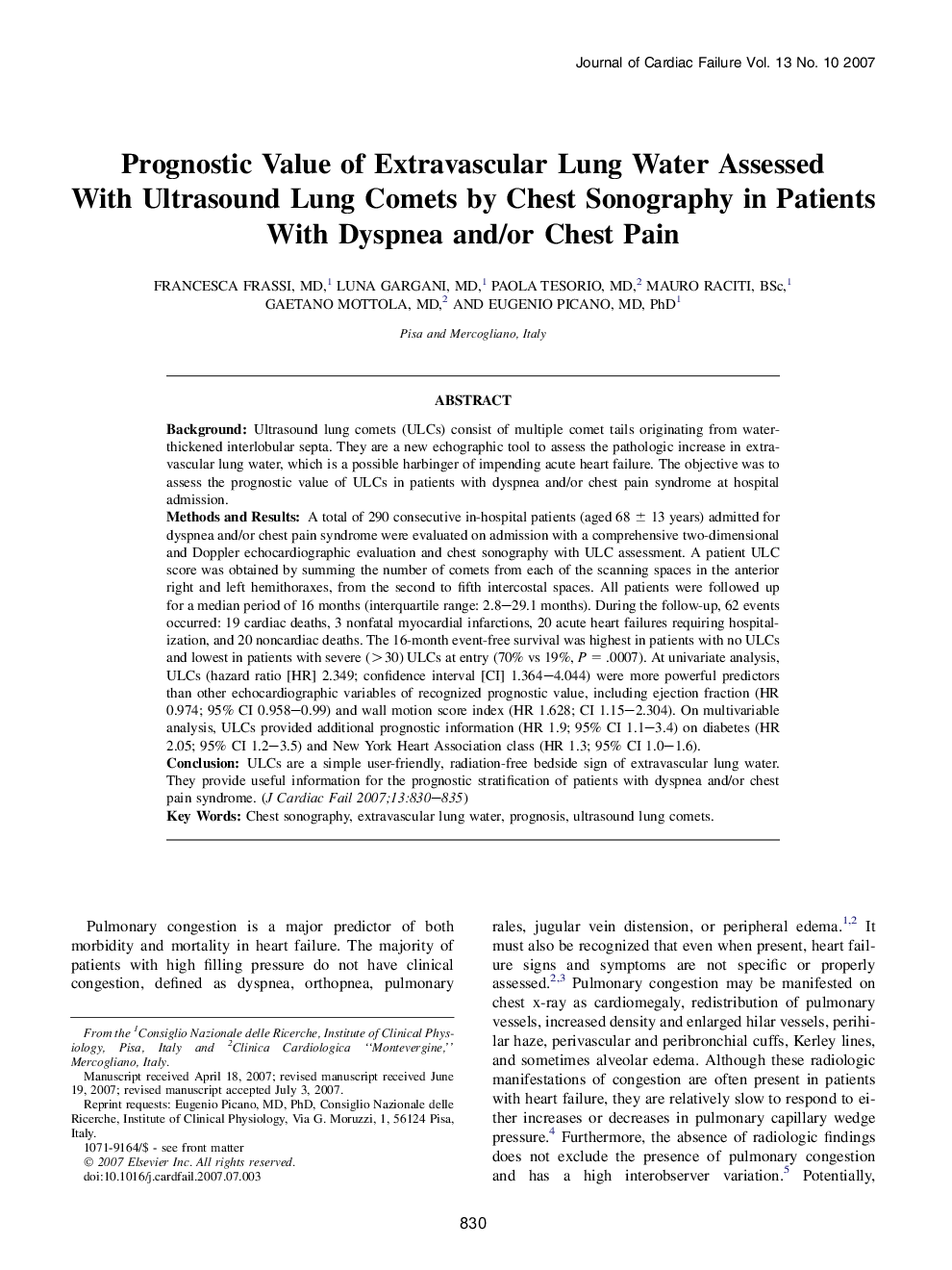| Article ID | Journal | Published Year | Pages | File Type |
|---|---|---|---|---|
| 2962344 | Journal of Cardiac Failure | 2007 | 6 Pages |
BackgroundUltrasound lung comets (ULCs) consist of multiple comet tails originating from water-thickened interlobular septa. They are a new echographic tool to assess the pathologic increase in extravascular lung water, which is a possible harbinger of impending acute heart failure. The objective was to assess the prognostic value of ULCs in patients with dyspnea and/or chest pain syndrome at hospital admission.Methods and ResultsA total of 290 consecutive in-hospital patients (aged 68 ± 13 years) admitted for dyspnea and/or chest pain syndrome were evaluated on admission with a comprehensive two-dimensional and Doppler echocardiographic evaluation and chest sonography with ULC assessment. A patient ULC score was obtained by summing the number of comets from each of the scanning spaces in the anterior right and left hemithoraxes, from the second to fifth intercostal spaces. All patients were followed up for a median period of 16 months (interquartile range: 2.8–29.1 months). During the follow-up, 62 events occurred: 19 cardiac deaths, 3 nonfatal myocardial infarctions, 20 acute heart failures requiring hospitalization, and 20 noncardiac deaths. The 16-month event-free survival was highest in patients with no ULCs and lowest in patients with severe (>30) ULCs at entry (70% vs 19%, P = .0007). At univariate analysis, ULCs (hazard ratio [HR] 2.349; confidence interval [CI] 1.364–4.044) were more powerful predictors than other echocardiographic variables of recognized prognostic value, including ejection fraction (HR 0.974; 95% CI 0.958–0.99) and wall motion score index (HR 1.628; CI 1.15–2.304). On multivariable analysis, ULCs provided additional prognostic information (HR 1.9; 95% CI 1.1–3.4) on diabetes (HR 2.05; 95% CI 1.2–3.5) and New York Heart Association class (HR 1.3; 95% CI 1.0–1.6).ConclusionULCs are a simple user-friendly, radiation-free bedside sign of extravascular lung water. They provide useful information for the prognostic stratification of patients with dyspnea and/or chest pain syndrome.
